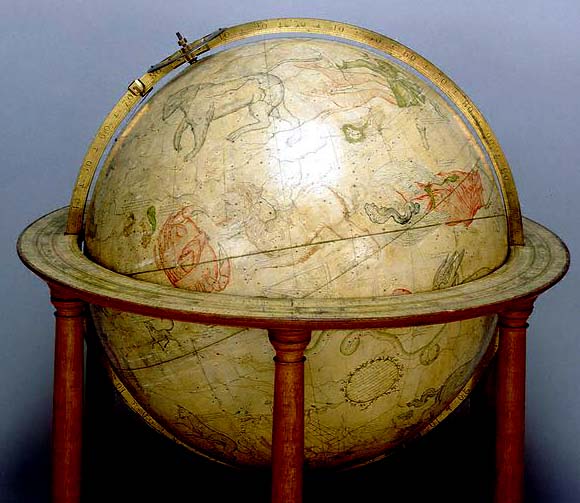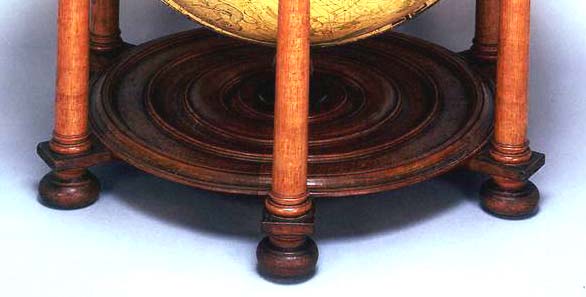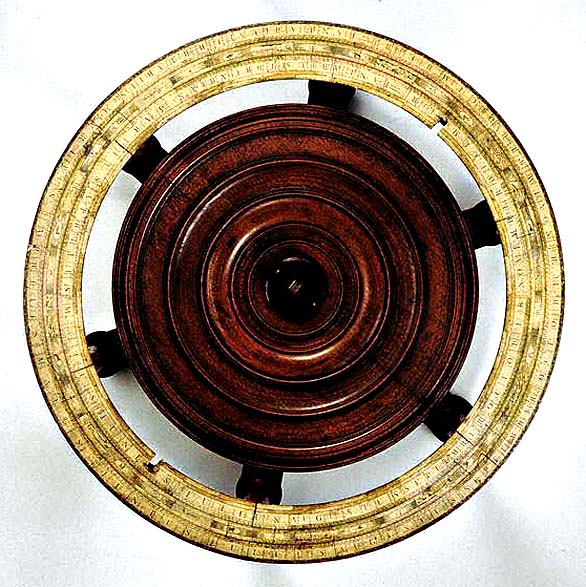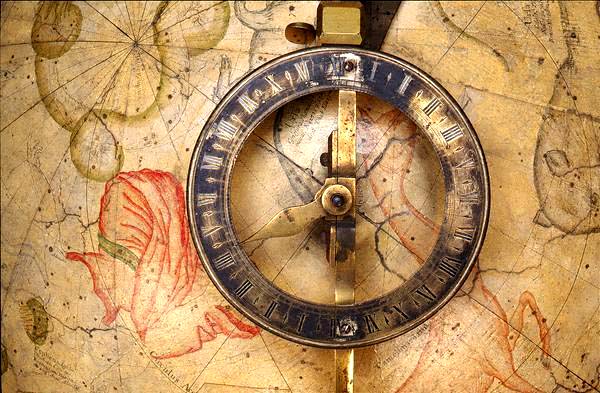

Materials: papier mache; plaster; copper plate engraved; varnish; brass; wood; paper; leather; ink; hand-coloured
Measurements: Overall: 930 x 880 mm;
Sphere diameter: 680 mm
Location: Caird Collection, National Maritime Museum, London
Description:
Celestial table globe. It forms a pair with the terrestrial globe. Astronomical details on the sphere include a labelled magnitude table above Bootes. The stars are marked by their Bayer notation, and the Milky Way is labelled. There are nebulae in three constellations and labels for novae in Cassiopeia. A total of 51 stars and seven star groups are named. The 48 Ptolemaic constellations and four of the non-Ptolemaic constellations are drawn. Four southern constellations are drawn as well as those of Plancius and Hevelius.
In a catalogue added at the end of Thomas Wright's 'The use if the globe or, the general doctrine if the sphere', printed in 1740 for Senex as a guide for the use of his globes, the 680 mm (27 in) pair was advertised. The design of the celestial globe shows the influence of Blaeu's 680 mm globe, particularly in the nomenclature of the constellations and the stars, see Blaeu GLB0105. Ramus, a name for the apples of Hercules, was first introduced by Senex himself, however, Senex was one of the first globe makers to use the Bayer notation on a globe. Next to 1740, he also records 939 BC, which is the earliest date researchers at the National Maritime Museum, London have ever found on a globe. .



| return to John Senex 1680-1740 | Go to Paradise Islands |